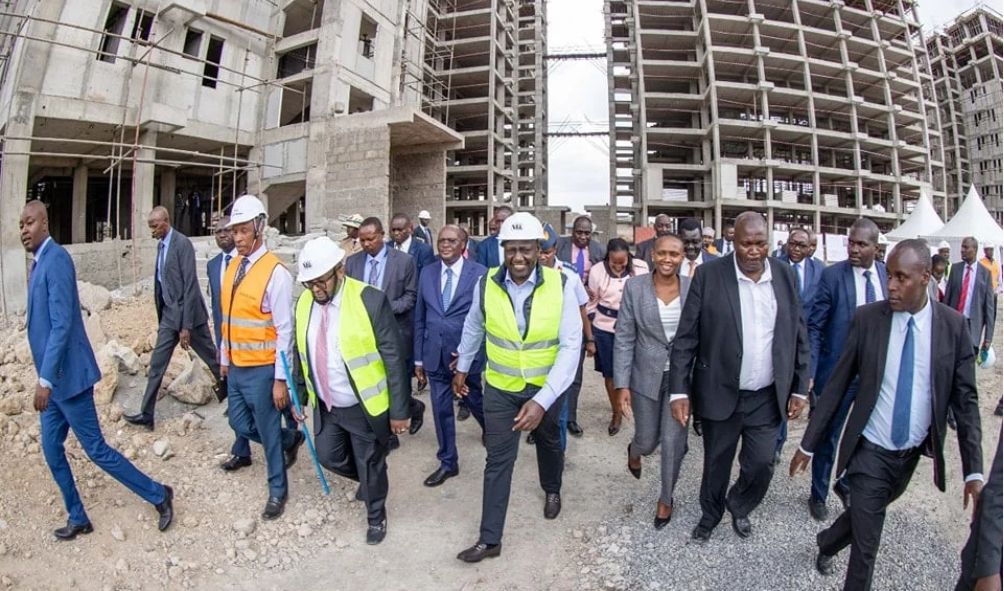Land and Material Costs Pose Risks to Ruto Housing Project – Architects
Concerns have been expressed by architects regarding the increasing expenses associated with land and construction materials in light of the Affordable Housing Programme initiated by President William Ruto’s administration.
In the Architectural Association of Kenya’s yearly report on the state of the construction environment, it was outlined that the elevated expenses have the potential to impede the affordability of housing.
As per the report, the cost of land in Nairobi has experienced a significant increase, with a parcel of land valued at Ksh30 million in 2007 now commanding a price of Ksh190 million in sought-after areas.
Due to the rise in land prices, the government will have no choice but to transfer the additional expenses to the purchasers.
“Kingsley Muwowo, Chief Finance Officer at Shelter Afrique, highlighted during the 11th World Urban Forum that market studies suggest land costs should ideally constitute 10 to 15 percent of the total housing unit cost.
“Regrettably, the current scenario paints a different picture, with land costs representing 40 to 60 percent of the total cost of a housing unit,” read the report in part.
ALSO READ:
- Under and Over 7 — when the rules are simple, but the emotions are intense
- CAF Trophy Hunt: Win iPhone, MacBook, PlayStation, and other prizes in 1xBet promo!
- Rigathi Gachagua Responds to Raila Odinga’s Claim That He Can’t Fix Kenya’s Problems
- Miguna Miguna Criticizes New IEBC Chair Erastus Ethekon, Calls Him a Ruto Ally- ‘Not Independent’
- Matiang’i: No Scores to Settle, I Just Want to Fix My Country
However, it was observed that the recent government taxes, coupled with the depreciation of the Shilling, had resulted in an increased cost of construction materials.
For example, the specialists mentioned the implementation of a 16 percent value-added tax (VAT) on fuel items, increasing transportation expenses.
Due to extra expenses, investors will be compelled to raise housing prices in their efforts to uphold their profit margins.
Alternatively, it was emphasized that some investors might be reluctant to engage in housing initiatives because of the elevated expenses associated with such ventures.
“Successfully managing the high costs associated with land and construction materials is critical for the success of the Affordable Housing Project.
“It necessitates collaborative efforts among the government, private sector, development partners, wholesale lenders, and investors to improve housing finance availability and establish a sustainable housing finance system,” the experts added.
Furthermore, the architects recommended that the government embrace cost-effective innovations, such as alternative construction materials.
Land and Material Costs Pose Risks to Ruto Housing Project – Architects
